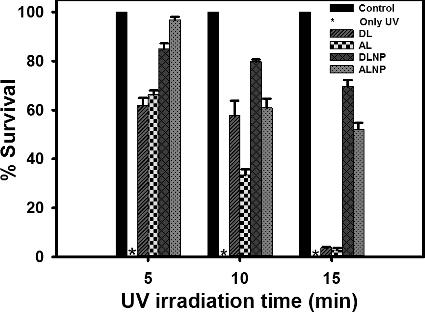Figures & data
Figure 1. FESEM micrographs with histograms of (a, c) DLNP and ALNP on the first day of preparation; (c, d) DLNP and ALNP stored at room temperature for 30 days. The results shown here are representative of three to four independent experiments performed on different days. Further details are as described in materials and methods.

Figure 2. TEM micrographs with histograms of (a, c) DLNP and ALNP on the first day of preparation; (c, d) DLNP and ALNP stored at room temperature for 30 days. The results shown here are representative of three to four independent experiments performed on different days. Further details are as described in materials and methods.
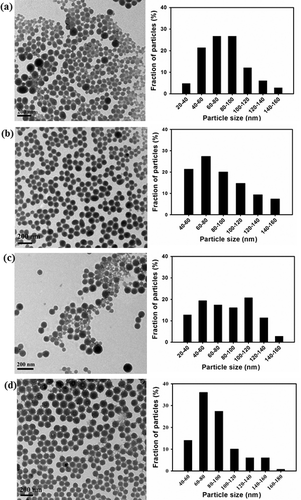
Figure 3. (a) UV, (b) FTIR and (c) DSC spectra of dioxane lignin nanoparticles (DLNP) and alkali lignin nanoparticles (ALNP). The results shown here are representative of three to four independent experiments performed on different days. Further details are as described in materials and methods.
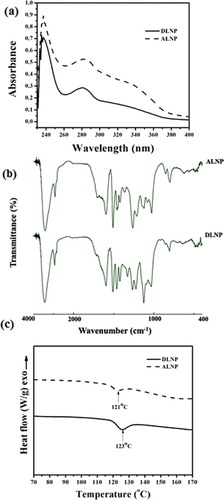
Figure 4. Antioxidant activity of DL, DLNP, AL, ALNP, BHT and Asc. The absorbance of DPPH was 0.9 ± 0.1 in the absence of test compounds. Results reported are mean ± SE of triplicates performed on three different days. Further details are as described in materials and methods.
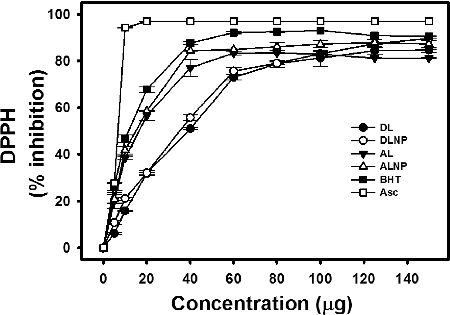
Figure 5. Survival rate of E. coli: The cells were incubated with dioxane lignin (DL), alkali lignin (AL), dioxane lignin nanoparticles (DLNP) and alkali lignin nanoparticles (ALNP) at different concentrations and irradiated with UV light for 5 min. Control – no test compounds and no UV irradiation; *– in the absence of test compounds growth of E. coli was not observed after UV irradiation at 10−5 dilution. The results shown here are representative of three to four independent experiments performed on different days. Further details are as described in materials and methods.
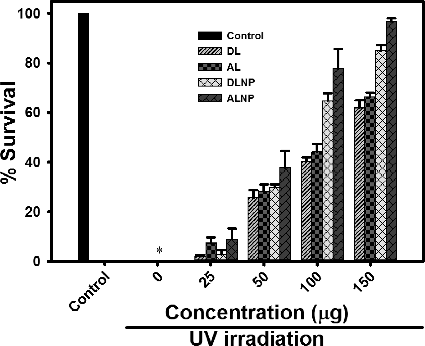
Figure 6. Survival rate of E. coli after UV irradiation for different time periods: 5, 10 and 15 min in the presence of 150 µg concentration of each of dioxane lignin (DL), alkali lignin (AL), dioxane lignin nanoparticles (DLNP) and alkali lignin nanoparticles (ALNP). Control – no test compounds and no UV irradiation; *– in the absence of test compounds growth of E. coli was not observed after UV irradiation at 10−5 dilution. The results shown here are representative of three to four independent experiments performed on different days. Further details are as described in materials and methods.
